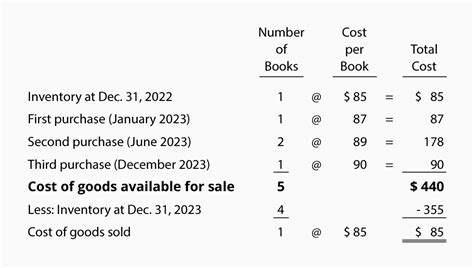How to List Inventory vs. Cost of Goods Sold (COGS) in Retail Accounting
Understanding the difference between listing inventory and calculating the cost of goods sold (COGS) is crucial for accurate retail accounting. This impacts your profit margins, taxes, and overall business health. This guide breaks down the process, clarifying the distinctions and providing practical examples.
What is Inventory?
Inventory represents the goods you have available for sale. This includes raw materials (if applicable), work-in-progress (WIP), and finished goods ready for purchase by your customers. Accurate inventory management is vital. Overstocking ties up capital, while understocking leads to lost sales.
Listing Inventory: Key Methods
Several methods exist for listing your inventory. The choice depends on your business size and complexity:
-
Periodic Inventory System: This simpler system counts inventory at the end of a specific period (e.g., quarterly or annually). It's less precise but requires less ongoing record-keeping.
-
Perpetual Inventory System: This more sophisticated system tracks inventory levels in real-time, updating stock balances with each purchase and sale. It offers greater accuracy but needs robust software or systems to manage.
-
First-In, First-Out (FIFO): This method assumes the oldest inventory is sold first. It's generally simpler to understand and use.
-
Last-In, First-Out (LIFO): This method assumes the newest inventory is sold first. It can be more complex and is less commonly used for retail accounting due to potential discrepancies with actual stock flow.
-
Weighted-Average Cost: This method calculates the average cost of goods available for sale during a period and assigns that cost to each item sold.
What is Cost of Goods Sold (COGS)?
COGS represents the direct costs associated with producing the goods you sold during a specific period. It's a crucial figure for determining your gross profit.
Calculating COGS: A Step-by-Step Guide
Calculating COGS involves several steps:
-
Beginning Inventory: Determine the value of your inventory at the start of the accounting period.
-
Purchases: Add the cost of all goods purchased during the period. This includes freight and any other direct costs of acquisition.
-
Ending Inventory: Determine the value of your remaining inventory at the end of the accounting period.
-
COGS Calculation: The formula for COGS is: Beginning Inventory + Purchases - Ending Inventory = COGS
Example:
Let's say your beginning inventory was $10,000, you purchased $25,000 worth of goods, and your ending inventory is $12,000.
Your COGS would be: $10,000 + $25,000 - $12,000 = $23,000
Listing Inventory and COGS: The Interplay
The accuracy of your COGS calculation directly depends on the accuracy of your inventory listing. Inaccurate inventory counts lead to inaccurate COGS figures, which can have significant financial consequences.
Key Considerations:
- Regular Inventory Counts: Conduct regular inventory checks to minimize discrepancies.
- Inventory Management Software: Consider using inventory management software to automate tracking and reduce manual errors.
- Consistent Inventory Methods: Maintain consistency in your inventory valuation method (FIFO, LIFO, weighted average) throughout your accounting periods.
Optimizing Your Retail Accounting
By meticulously tracking your inventory and accurately calculating your COGS, you gain a clearer understanding of your profitability, enabling better business decision-making. Remember to consult with an accountant or financial professional for personalized advice tailored to your specific business needs. They can help you select the appropriate inventory management and COGS calculation methods for optimal financial reporting.
